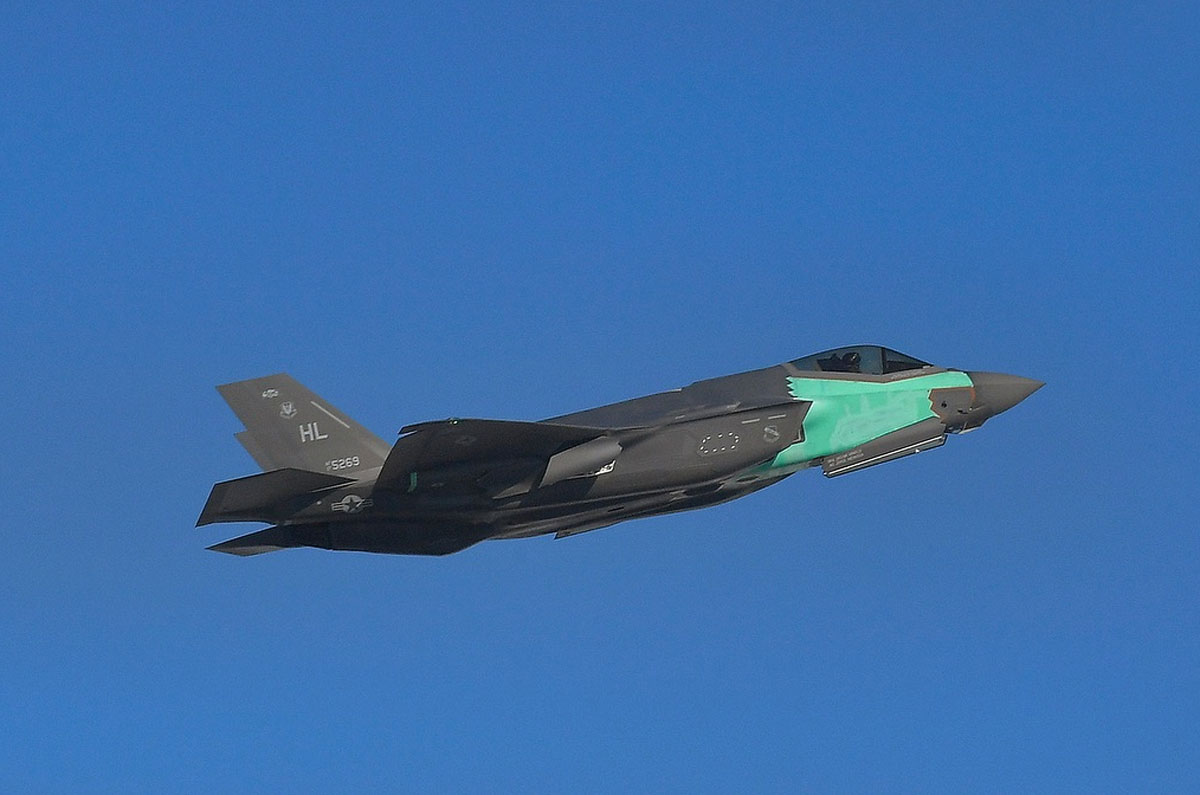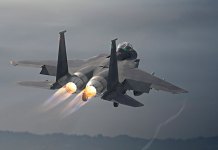Powerful and technologically advanced air forces are recycling military equipment to boost their firepower. For example, the United States Air Force (USAF) successfully reassembled two damaged F-35 stealth fighters to make one Frankenbird. Similarly, the British Royal Air Force is recycling Tornado jet parts for its next-generation aircraft.
The 388th Fighter Wing of the USAF recently announced that it accomplished a spectacular feat: Rebuilding an F-35A Lightning II fighter using components from two damaged F-35 aircraft.
The new aircraft, called “Frankenbird,” recently made its first flight after a protracted rebuilding process that started in 2023.
One of the F-35s was damaged in a catastrophic engine fire at Eglin Air Force Base in 2014, with the USAF officials later determining that the aircraft’s damage was worth more than US$50 million.
The other F-35 was damaged in a nose-gear collapse at the Hill Air Force Base in Utah in 2020. The USAF investigators did not disclose the full extent of its damage, but it was believed to be severe.
With the number of F-35 accidents rising, the USAF started researching the viability of fusing parts of many damaged F-35 airframes to create a single, whole aircraft in January 2020. However, the concept was not implemented until 2023.
The 388th wing stated that the Frankenbird project was an interagency effort between the F-35 Joint Program Office, Ogden Air Logistics Complex, 388th Fighter Wing, and Lockheed Martin.
The team developed special tooling, supports, and other equipment to support and connect the aircraft pieces. That work was done at the Ogden Air Logistics Complex before the aircraft was turned over to the 388th FW in November 2023.

Scott Taylor, the project’s principal mechanical engineer at Lockheed Martin, stated that the tools and methods developed during that phase of the project could be applied in the future to repair damaged aircraft.
Senior Airman Jaguar Arnold said, “When we received the aircraft, it was pretty much a shell. There were a lot of tasks to complete that we hadn’t done before at the unit level.”
Arnold explained that this included reinstalling landing gear with the correct aircraft center of gravity and acquiring and putting in place “belly bands” and flight controls.
The team worked with engineers and technicians from Lockheed Martin to rewire the aircraft, rebuild the cockpit, install avionics computers, and install several components that are rarely found in flight line maintenance shops.
Additionally, airmen constructed and applied coatings to parts to restore the jet’s low-observable qualities in different areas. The effort frequently required a careful balancing act between squadron and group leadership to use parts to rebuild an aircraft while still satisfying the maintenance requirements of an operational fighter squadron. But in the end, it paid off.
Notably, this is not the first time the US has fused two different aircraft to make one operational fighter jet.
In the late 2000s and early 2010s, Northrop Grumman built three two-seat F-5F “Franken-Tiger” fighters for the U.S. Navy by fusing pieces from the service’s existing F-5Fs with parts from former Swiss Air Force single-seat F-5Es.
However, the “Frankenbird” is unique because it is significantly more difficult to fuse two damaged stealth aircraft to make one.
The feat is also significant because producing a new F-35 Lightning II is time-consuming and expensive. Swamped with orders, Lockheed Martin is trying to adhere to delivery schedules by producing as many aircraft as possible.
So, when an existing aircraft sustains damage, it cannot be replaced immediately. Moreover, producing a new jet is expensive—a new airframe costs a whopping US$80 million. This makes salvaging components from damaged fighters to produce ‘Frankenbird’ a very sustainable solution.
In another development, the British Royal Air Force has decided to repurpose parts from its older Tornado jets for use in its upcoming next-generation aircraft.
The Tornado To Temptest Pipeline
The Royal Air Force (RAF) announced in a statement on February 5 that it has started a ground-breaking initiative to recycle parts from retired Tornado jets and use them to build Britain’s next generation of combat aircraft ‘Tempest’–a sixth-generation aircraft that will deploy new, game-changing technology and will replace the Eurofighter Typhoon when it enters service in 2035.
The recycling project called “Tornado 2 Tempest” essentially turns surplus Tornado parts into metal powder that can be used in 3D printing to make new parts for the Tempest program. The RAF retired these Tornado fighter jets in 2019 after over 40 years of service.
The RAF statement noted, “Individual parts from retired fighter jets have been ground down and 3D printed into new components suitable for the UK’s next generation of military aircraft – a first-of-its-kind initiative for the Royal Air Force.”
The Defence Recycling & Disposals Team of Defence Equipment and Support is leading the project in collaboration with Rolls-Royce, Additive Manufacturing Solutions Limited (AMS), and the Ministry of Defence Future Combat Air System team.

According to the RAF, the team working on this project selected titanium-containing tornado components, such as the compressor blades from a low-pressure air compressor used in jet engines. Then, they were cleaned, effectively atomized and recycled into 3D-printed nose cones and compressor blades for Orpheus, Rolls-Royce’s compact engine concept that delivers Tempest.
The technique’s potential for usage in the sixth-generation jet was purportedly demonstrated when the nose cone was installed on an Orpheus test engine and passed safety and suitability inspections.
The RAF believes that the development could save money, reduce the UK’s reliance on global supply chains of critical and high-value metals, and produce components that are lighter, stronger, and longer lasting than those made through traditional forging techniques.
- Contact the author at sakshi.tiwari9555 (at) gmail.com
- Follow EurAsian Times on Google News




